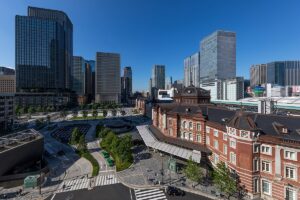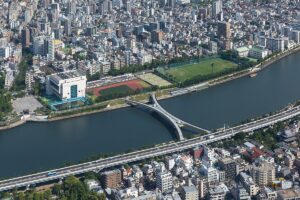Overview (history, characteristics, attractions)
Shiroyone Senmaida is a group of rice terraces built on a coastal terrace facing the Sea of Japan in Wajima City, Ishikawa Prefecture. Rice paddies of various sizes are lined up in multiple layers on the slopes, and as the name "Senmaida" suggests, the landscape is characterized by small rice paddies measuring roughly 1,000 rice paddies spreading out like waves. This landscape has been maintained by local farmers since ancient times, and is popular with tourists as a landscape symbolizing the natural environment and human activities of Noto's satoyama and satoumi.
The scenery changes with the seasons, and you can enjoy the beauty of each season, from rice planting in the spring, green rice paddies in the summer, golden ears of rice in the fall, and snowy scenery in the winter. In recent years, the area has been lit up at night (with solar LEDs for the "Sparkle on the Ridges" effect, etc.), and the fantastic scenery that can be seen from twilight onwards has attracted even more attention.
Highlights
- Panoramic view of Senmaida from the observation point (the contrast between the sea and the rice terraces is beautiful)
- During the early morning mist and sunset: The rice fields shine like a mirror depending on the light, making them a great photo spot.
- Rice planting (spring) and rice harvesting (autumn): You can see local agricultural work up close (the timing of work varies from year to year)
- Winter illuminations (e.g., Sparkling Ridges): Solar lights illuminate the area from evening to night, creating a fantastical scene (please check as the period varies from year to year)
- Satoyama and Satoumi Nature Observation: Enjoy the scenery where the sea and countryside coexist along the coastline and nearby walking trails
Access (nearest station, transportation, etc.)
- Nearest major station: Kanazawa Station (nearest major transportation hub). As there are few public transportation services in the Noto region, access from Kanazawa is the most common.
- Bus: There are express and local buses running from Kanazawa to Wajima, but we recommend checking in advance as the number of buses is limited. From central Wajima, you can get to the site by local bus, sightseeing bus, or taxi.
- By car: It usually takes about 1.5 to 2 hours (about 100km) from Kanazawa city via national and prefectural roads. From downtown Wajima, it takes about 10 to 20 minutes by car (depending on distance and traffic conditions). Parking is available (around the observation deck), but it may be full during busy times.
- Note: Public transportation in the Noto region has limited service, so we recommend leaving plenty of time or renting a car. Please check the official website of the Wajima City Tourist Association for the latest timetables and access information.
Estimated stay (estimated time required)
- Short-term viewing: 30 minutes to 1 hour for photography and viewing at the observation deck
- Leisurely sightseeing: 1-2 hours including the observation deck, strolling around the area, taking photos, and using the cafe and shop
- Event/Illumination Viewing: If you are waiting for the illuminations to start at dusk, you will need at least two hours (allowing for ample travel time to and from the venue)
Nearby spots
- Wajima Morning Market: A famous morning market held every morning in the center of Wajima City. Local seafood and souvenirs are on display (about 15 minutes by car).
- Wajima Lacquerware Workshop and Museum: A facility where you can learn about Wajima's lacquerware culture and experience making it yourself
- Coastal drive on the Noto Peninsula: The area northwest of the Shiroyone Senmaida rice terraces along the Sea of Japan is full of scenic spots and is perfect for a drive.
- Local restaurants: There are many restaurants in the city that serve Wajima seafood and local cuisine.
Things to be aware of (crowds, manners, seasonal precautions, etc.)
- Crowds: During illumination periods, weekends, and holidays, the park is crowded with tourists, and the parking lots and observation areas are often crowded. Popular times, such as early morning and evening, are especially busy, so please allow yourself plenty of time.
- Manners: The rice terraces are the livelihood of farmers. Please do not enter the fields or touch the crops. Please be considerate of the farm equipment and workers in use.
- Roads and Parking: Please drive carefully as the roads around the site are narrow in places and have curves with poor visibility. Please follow parking signs and avoid parking on the street.
- Weather and clothing: The Sea of Japan side has strong seasonal winds and can get very cold in winter. We recommend dressing warmly and wearing non-slip shoes. Views and photography may be restricted in rainy weather.
- Light-up information: The timing and lighting times for the light-up (such as the sparkle on the ridges) change every year, so please check the official information in advance.
- Drones, etc.: Flying drones without permission can cause nuisance to the surrounding area and pose safety issues. Please check with local authorities and relevant parties before using a drone.
Before visiting, it's a good idea to check the latest information (light-up periods, transportation information, and parking information) on the official website of the Wajima City Tourist Association. Shiroyone Senmaida is a beautiful landscape woven together by nature and human activity, so please enjoy it at your own pace while observing good manners.




